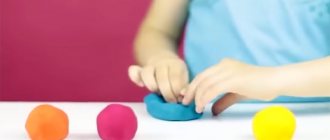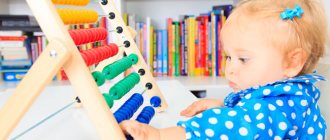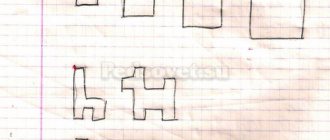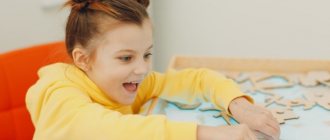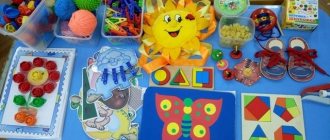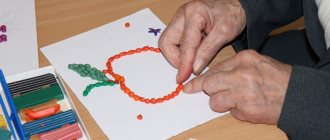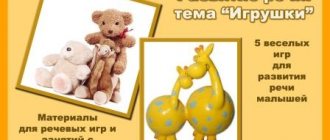At the age of two and a half, children make a huge leap physically and mentally: they prepare their parents for a new test of their competence and patience. There will be a crisis of 3 years. The child continues to grow by leaps and bounds. The main difficulties of upbringing are that the child begins to understand himself as an individual, he tries to find his position in society, to prove to everyone the right to his own opinion. His temperament and character had already, in essence, been established, and many new interests had appeared. Many children are getting ready to go or are already attending kindergarten.
How a baby talks at 2 years and 5 months
It becomes more and more difficult to calculate how many words a child has mastered, as his vocabulary grows every day. The baby is able to express his thoughts in common sentences containing more than 3 words.
At two and five, the child should know the names of primary colors, items of clothing and body parts, be able to describe a familiar picture and answer leading questions.
At this age, the baby can memorize small rhymes, continue a sentence from a fairy tale that is told to him, or hum a familiar song. At 2 years and 5 months, the baby should be able to conduct a dialogue with adults or peers, not only answering their questions, but also asking counter questions.
There are still difficulties in the child’s speech with the formation of some words by analogy with the vocabulary he knows. For example, based on the “I’m playing” principle, he can say “I’m getting up” or “chewing.” At this age, it is considered normal that the baby has difficulty pronouncing long words. Usually the baby simplifies them, turning “Bus” into “autobus”.
In such cases, the baby’s speech must be patiently corrected so that incorrect pronunciation of words does not become a habit.
Guessing pictures and textures by touch
Remember, in the article about games for the development of motor skills from 2 years old, I mentioned the game “Magic Bag”. This activity, as a rule, always goes off with a bang! Because it contains an element of surprise, and children love this passion. But it is worth noting that in addition to positive emotions, the game also stimulates sensory perception, because in the process of playing the child learns to identify objects by touch.
If you have already mastered the tactile games from the previous article, I suggest you try more advanced options for developing sensory sensations.
Option 1. Tactile pictures
You can make tactile pictures yourself using velvet colored paper (it is sold at any stationery store). To do this, cut out silhouettes of simple pictures from velvet paper and paste them onto cards made of ordinary colored cardboard. Thus, the pasted picture will differ from the card itself in texture. It is also desirable that the shapes of the pictures differ noticeably from each other. I took ideas from simple coloring books I downloaded on the Internet.
When the cards are ready, let your child feel each of them first. And then ask him to close his eyes and guess by touch any of the cards you offer. Repeat the game with other cards.
Option 2. Touch lotto
Unlike regular lotto, in sensory lotto the child is asked to find the same chips not visually, but tactilely. You can buy a lotto ready-made or make it yourself, armed with a glue gun, baby food lids and various textured materials (for example, cereals, beans, pompons, velvet paper, beads, sponge). See the video for an example of a homemade lotto.
If your child has never played with tactile lotto before, then first just look and feel all the chips, discuss which ones are soft, which ones are rough, prickly, smooth, etc. And after you have studied it thoroughly, offer to play the “Magic Bag” by putting a small amount of chips into it. The child’s task is to find in the bag by touch exactly the same chip that you show him.
Emotional and mental development of the child
By the age of 2.5 years, the baby begins the phase of actively defending his “I”. Psychologically, he gradually separates from his parents, beginning to recognize himself as a separate person. Observing the world around him, the child forms his own views on everything that happens around him. At 2 years 5 months, the formation of the baby’s character begins.
- Emotional development . When your child is just over 2 years old, he actively begins to display various emotions. He feels tenderness and shows concern for loved ones, is happy or angry, sad, envious or afraid, and is very proud of his achievements. While he still cannot fully understand the behavior of other people and evaluate their actions. Closer to 2.5 years, the baby is delighted with everything that happens around him - the flowers he sees on a walk or the gust of wind that quickly sweeps an autumn leaf through the air. Shows an active interest in animals and plants. In his little head there are already emotional associations with what happened to him before - during the holiday it can be fun, playing alone is boring, and going to the doctor is scary.
- Attachment to loved ones . Children are still very attached to their families, but they are already clearly aware of the individuality of each of them and treat each of them differently. The baby understands that dad is strict, mom is kind, and grandma is the most caring. The baby now treats them differently, he listens to some, but not to others. The wariness with which he meets a stranger disappears as soon as the child feels a friendly attitude towards himself. At this age, children become more inquisitive and easily make contact.
- Showing independence . At 2-3 years old, the little man’s favorite phrase becomes “I myself!” Unfortunately, not everything a child can succeed at once, so failures cause a storm of emotions in the child. Adults need to be patient, not discourage the child’s desire for independence, but tactfully help to cope with this. The child should have the impression that he coped with the task himself.
Household skills
The list of what a 2.5-year-old child should be able to do in everyday life is significantly expanding.
Most babies:
- cope with washing on their own, using soap and a towel, even brushing their teeth;
- know how to comb hair;
- try, as far as possible, to eliminate any traces of negligence;
- maintain order, are ready to put away toys themselves, put their things on a chair or in a closet;
- they eat themselves using a spoon and drink from cups;
- dress and put on shoes without the help of others, if there are no fasteners;
- control bodily needs.
Physical development of a child at 2 years 5 months
The toddler's musculoskeletal system continues to improve.
By this time, the baby is already quite developed physically and can do a lot.
- He successfully overcomes obstacles along the way.
- Jumps on 1-2 legs.
- Can walk on tiptoes.
- Squats and jumps.
- Maintains balance while standing on tiptoes.
- Skillfully handles the ball - throws it in a horizontal plane and over obstacles, catches it, hits it with his foot or hand.
- Takes things with two fingers, successfully places one object into another.
- Goes up and down stairs without adult help.
- Opens and closes the door independently.
The muscular-ligamentous apparatus is increasingly strengthened, movement becomes more accurate, varied and confident.
Playing with a balancer
How is a balancer useful? First of all, it develops coordination and accuracy of movements. After all, installing cylinders on scales is not the easiest task for a child; it requires significant concentration and clarity of movements.
In addition, many balancing games (which contain cubes and cylinders of different colors) can be used as a first board game. I wrote about this in detail in an article about board games, so I won’t repeat it.
Baby's daily routine
There is no doubt about the benefits of keeping a daily routine for a little person. The child becomes disciplined and learns to do what he does not want to do at the moment.
What is included in a baby's daily routine?
- Eating.
- Developmental activities with the child.
- Active and passive games.
- Walks.
- Daytime sleep.
- Morning and evening water procedures.
By this age, parents can determine the time allotted for each item independently. Some children like to sleep a lot, others spend the whole day in continuous movement, and some children prefer to play quietly in the sandbox.
Create a daily routine for your child based on his emotional and physical development.
We stretch the rubber bands on the geoboard
Geometric, also known as geoboard, also known as math tablet (My-shop, KoroBoom) is a fairly popular educational toy these days. I already wrote about it in an article about logic games, and I will repeat it here. Why? Because for a two-year-old child, a tablet is primarily relevant as a simulator for the development of fine motor skills. Do you think it’s easy to stretch and tighten rubber bands on nails? The task is not trivial for a child, but with due diligence the child will definitely master it. The child will be happy to build endless webs, conquering unyielding rubber bands.
And when the skill is mastered a little, you can show your child that it is also interesting to create pictures from rubber bands. Here is a list of the most “hit”, in our opinion, pictures for designing - a comb, a table, a chair, a man, flowers, a Christmas tree, a flag, letters. The pictures are simple and therefore well suited for beginners.
Taisiya and I had the simplest geometrics (as in the photo above), but now the manufacturers have gone further - in the kit of some geoboards you can also find cards with tasks! The essence of the tasks is for the child to complete existing pictures using rubber bands. I really like this “addition”, because it makes the geoboard even more accessible to kids. This is a wonderful preparatory stage for the independent construction of paintings.
Baby nutrition at 2 years 5 months
In order for the baby to develop normally, you need to properly balance the diet. A child of this age needs to be fed 4 times a day, including in his diet foods rich in proteins, fats, vitamins, minerals and trace elements necessary for normal development.
- Meat products - lean pork, chicken, beef, liver, as well as fish products should make up 7-8% of the baby's daily diet.
- Dairy and fermented milk products - kefir, milk, sour cream, cheese, yogurt and cottage cheese make up about 40% of the baby’s daily diet.
- Flour and cereal products - baked goods and cereals account for about 15% per day.
- Vegetables and fruits are an indispensable attribute of the children's menu. Being a storehouse of vitamins for the child’s body, they should make up at least 35% of the total food per day.
- Sugar, oil and fats of plant and animal origin are a source of energy for the baby. Their daily diet should be no more than 3%.
- The fluid requirement of a child aged 2 years 5 months is up to one and a half liters per day. It can be tea, juice, compote or jelly.
All products are included in the little man’s diet in various combinations so that his menu is varied and the baby eats with pleasure.
Assembling pictures by overlaying elements
Despite the fact that to prepare this game you only need a marker and sour cream lids, it develops spatial and logical thinking no worse than the well-known Bondibon. Therefore, stock up on sour cream and get started!
What is the essence of the game? The child needs to assemble a whole picture from individual parts drawn on the lids. This is a completely new problem for a child’s spatial thinking, because when playing with blocks or construction sets, he is used to getting a certain image or shape by putting the parts together. Here the picture will be obtained by superimposing transparent parts on top of each other.
To play the game, you will need to prepare several simple picture diagrams and draw the corresponding elements on the transparent covers. For example, on one cover we draw a house, on another – a fence, on the third – the sun, on the fourth – grass. If you combine all this, you get a beautiful village landscape. Elements of different pictures must be mixed together so that the child himself can select the appropriate ones, focusing on the diagram. You can see the essence of the game in more detail in the video.
Playing with small mosaic pieces
Any mosaic is an excellent trainer for a child’s fine motor skills. And if earlier, a year, one of the child’s main toys was a mosaic with large chips, now he can be offered a mosaic, which many of us probably remember from childhood - with small details on tiny legs (Ozon, My-shop, KoroBoom ).
The very process of pushing the thin plastic legs into the tiny holes is very exciting for the baby. There is no need to rush the child by asking him to immediately draw a picture; let him calmly learn a new skill. And when the construction of abstract images is already easy, try to involve your child in the construction of paths and simple figures.
Taisiya liked most of all to build bridge paths between two small toys placed at the edges of the playing field. The paths may not be of chaotic colors, but with a certain pattern (alternating colors through 1, through 2 or more complex patterns) - this is how we immediately develop logical thinking.
